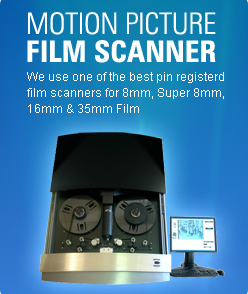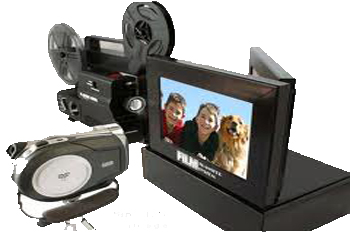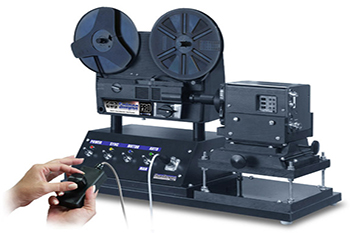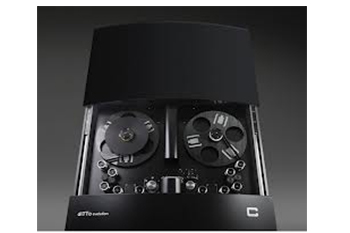
Film Conversion Equipment
Film Scanning and Film Transfer Equipment Types
The type of film scanning machine used for your 8mm, Super 8 or 16mm film conversion will have as much of an impact on the quality you receive as the resolution of the scan itself will. For example, if you wanted to digitize a photograph and tried doing it two different ways. You first put the photograph down on a table and took a picture of it using your smart phone or camera. Then you took the picture and scanned it using a flatbed scanner. If you compare the two side by side on your computer it will become really obvious that the flatbed scanner produced a digital image as good as the photograph. However, the picture you took with your phone or camera does not look close to the quality of the original photograph.
The same goes for scanning your 8mm, Super 8 or 16mm film. The real-time and frame by frame machines below are using a camcorder to take a picture of your film. The motion picture film scanner and Datacine machine are scanning the film. The results will be significantly different.
Film Conversion Equipment |
|
Real Time
|
|
Frame by Frame
|
|
Professional Film Scanners
|
|
San Antonio Fun Facts: Named for Saint Anthony of Padua, on whose feast day (June 13) a Spanish expedition explored the area in 1691, the San Antonio River was the principal tributary which spawned the founding of its namesake village in 1718. The site, on the river's west bank, was initially a stopping place on the Texas wilderness trail leading to French trading posts in Louisiana. By 1731 the town was known as San Antonio de Béxar, which in 1773 became the capital of Spanish Texas. During the Texas Revolution, San Antonio was the site of several battles, including the battle of the Alamo in 1836, in which 189 defenders held the old Alamo mission for 13 days against some 4,000 Mexican troops.
Texas Fun Facts: Hostile natives and isolation from other Spanish colonies kept Texas sparsely populated until following the Revolutionary War and the War of Mexican Independence, when the newly established Mexican government began to allow settlers from the U.S. to claim land there. This led to a population explosion, but dramatically reduced the percentage of the population with Mexican heritage, causing friction with the government in Mexico City. After several smaller insurrections, the Texas Revolution broke out, and the state became an independent nation in 1835.








